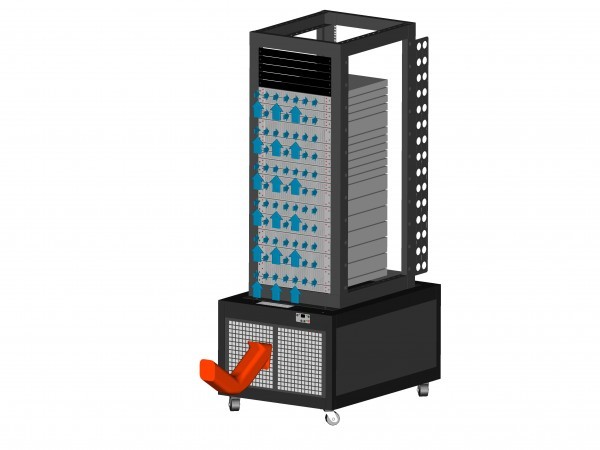Companies used to cool their data centers with an air distribution method known as chaos. This would send large amounts of cooled air through computer room air conditioning units into the data center. Yet this method proved to be inefficient as hot exhaust air would reach server air intakes and bypass air was created that harmed cooling efficiency. Today, a number of different server rack cooling methods are used. Let’s take a look at some of the top strategies.
Hot Aisle / Cold Aisle
Plenty of businesses replaced their chaos approach with the use of the hot aisle / cold aisle server rack setup. This pits cool air intakes against hot air exhausts within server row racks. Businesses that make use of the hot aisle / cold aisle strategy must create cooling convection currents. To create these currents, server racks must be positioned in a uniform manner. They are typically aligned in rigid rows.
This method creates convection currents that generate better airflow and consequently, lower data center temperatures. While this strategy proved to be more effective than the chaos method of air distribution, many business complain that it isn’t that significant of an improvement. Businesses with small to medium sized data centers will benefit from this rack solutions strategy while those with more dense centers should seek another approach.
Containment
One of the most popular cooling strategies is known as containment. This approach controls air streams by enclosing servers racks within sealed units that vent out hot exhaust air to CRAC units. Containment strategies also pipe chilled air right into the server structure’s air intake. This boosts cooling efficiency as the supply and return air flows prevent bypass airflow and air re-circulation. Since air isn’t re-circulated, servers aren’t impacted by harmful warm air that can chop years off of the lifespan of IT machines.
The containment strategy also decreases the energy bill. Cooling systems that use containment separate return air and provide supply air at 65 degrees Fahrenheit or warmer. This cuts down on CRAC power consumption by between 10 and 20 percent. Unlike the hot aisle / cold aisle strategy, containment doesn’t require the generation of convection currents, so data center equipment can be placed in any arrangement.
Data Center Room Design
When companies build offices, they typically designate a white space for the data center. Many choose to design data centers from the walls in but the more prudent strategy is to design them from the server rack outward. This is a critical design approach that can prolong equipment life and lower utility bills. When designing a data center, a business should not build the room and fill it up with racks.
The better approach is to pick out the necessary racks and then build the room around those racks. This way, the perfect infrastructure will be built for the company’s unique data center needs. This will prevent defects, reduce energy costs and boost intensity usage.
Chimneys
Plenty of companies are making use of chimneys over racks. These help to eliminate warm exhaust from servers. Chimney racks are capable of an intake of around 30kW a rack. They don’t require a complex infrastructure or specialized technology.
Liquid Cooling
Some companies make use of liquid air to cool their IT equipment. While this method requires substantial infrastructure, it provides power benefits and reduces damage to machine components. Liquid cooling is especially useful for high performance computers with racks that hit 30kW power densities and higher.
+Katrina is a computer savvy tech specializing in designing and manufacturing custom server racks at Racksolutions.com
